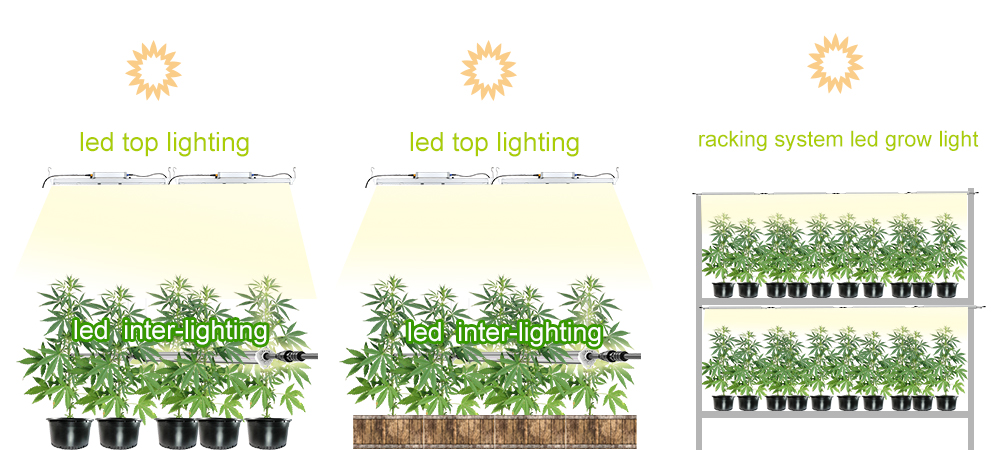How to Supplement Lighting for Greenhouse?-Part one
As far as indoor agriculture is concerned, depending on whether natural light is used, it can be divided into indoor farms fully relying on natural light, indoor farms with supplementary lighting and indoor farms completely relying on artificial lighting. Greenhouse is a kind of typical indoor farm all these three case may exist. Today we will talk about how to supplement lighting for greenhouse, what is mentioned above the indoor farms with supplementary lighting. compared with the other two cases , it is more complex.
At present, the most advanced method is to use intelligent control system to keep the light of the whole greenhouse in long-term balance. The intensity of light is not constant throughout the day. The intensity of light may vary over time or with the weather. a dimmable led grow light with a concomitant lighting measuring equipment , plus an intellegent terminal control system will do well in keeping light intensity balance.
2. auxiliary lighting modes for different planting patterns in greenhouse
Different crops have different plant characteristics and different planting patterns. Different plant characteristics and different planting patterns will vary in the way they complement the light. We will make a specific analysis of the plant characteristics and planting patterns of some profitable greenhouse commercial crops so as to determine the light supplementation pattern suitable for this crop.
tomato
Tomato is one of vine crops that are common in commercial greenhouse farming. The tomato plant is taller. Even for the shorter varieties, the plant height can be as high as 1.5 to 1.8m. So in a greenhouse the crop is not suitable for stacked planting. It is generally grown in greenhouses in organic soil or hydroponics in a tiled manner.

Tomatoes, growing to fruition, will become leafy. It is difficult to get enough sunlight on the lower branches. So when you grow tomatoes in a greenhouse, the lighting solution that we recommend is a combination of top lighting and interlighting.
cannabis
Cannabis has been a popular greenhouse crop for the last 10 years. Because of the high value of marijuana and its gradual legalization in individual states, a growing number of growers, smelling an opportunity, are jumping on the commercial cannabis cultivation bandwagon.To keep their investment in growing marijuana from going out of business, many growers move their cannabis cultivation indoors to avoid the effect of vagaries weather and to create optimum conditions for growing marijuana.
The common way cannabis is grown is in nursery pots and then place them indoors orderly. Or set up planting grooves ,fill with organic soil and plant cannabis inside. In places where land resources are scarce, growers also use vertical racking systems to make full use of vertical space resources for stacked planting.

when cannabis strains grow to the middle and late vegetative growth stage and the flowering stage after that, leaves will shade each other,and cause a lack of lighting of the lower end of the strain. At present, growers mainly use two methods to reduce the shade effect caused by leaves.
One is defoliation, however, this method has certain harm to the strain, especially when it is used in the flowering period of cannabis. The operation of defoliation at this time requires setting aside some nutrients from the whole to heal the wound and form new callus. The loss of nutrients is not conducive to supplying nutrition for cannabis buds.
The second is use led inter-lighting to supplement the lower canopy lighting, which does not need to remove the leaves that block the sunlight, so as not to harm the cannabis strains. In this way, all the nutrients of the strain can fully support the flower bud that has already bloomed. The hemp flowers produced are tastier and sweeter.
So for these three planting patterns grown in greenhouses, The proposed lighting supplement for the first two planting patterns, planting in nursery pots and planting in planting grooves in greenhouses is a combination of top lighting with a spectrum specifically designed for cannabis and led inter- lighting . while the last pattern-vertical stacked planting, is recommended with special racking system led grow light.


